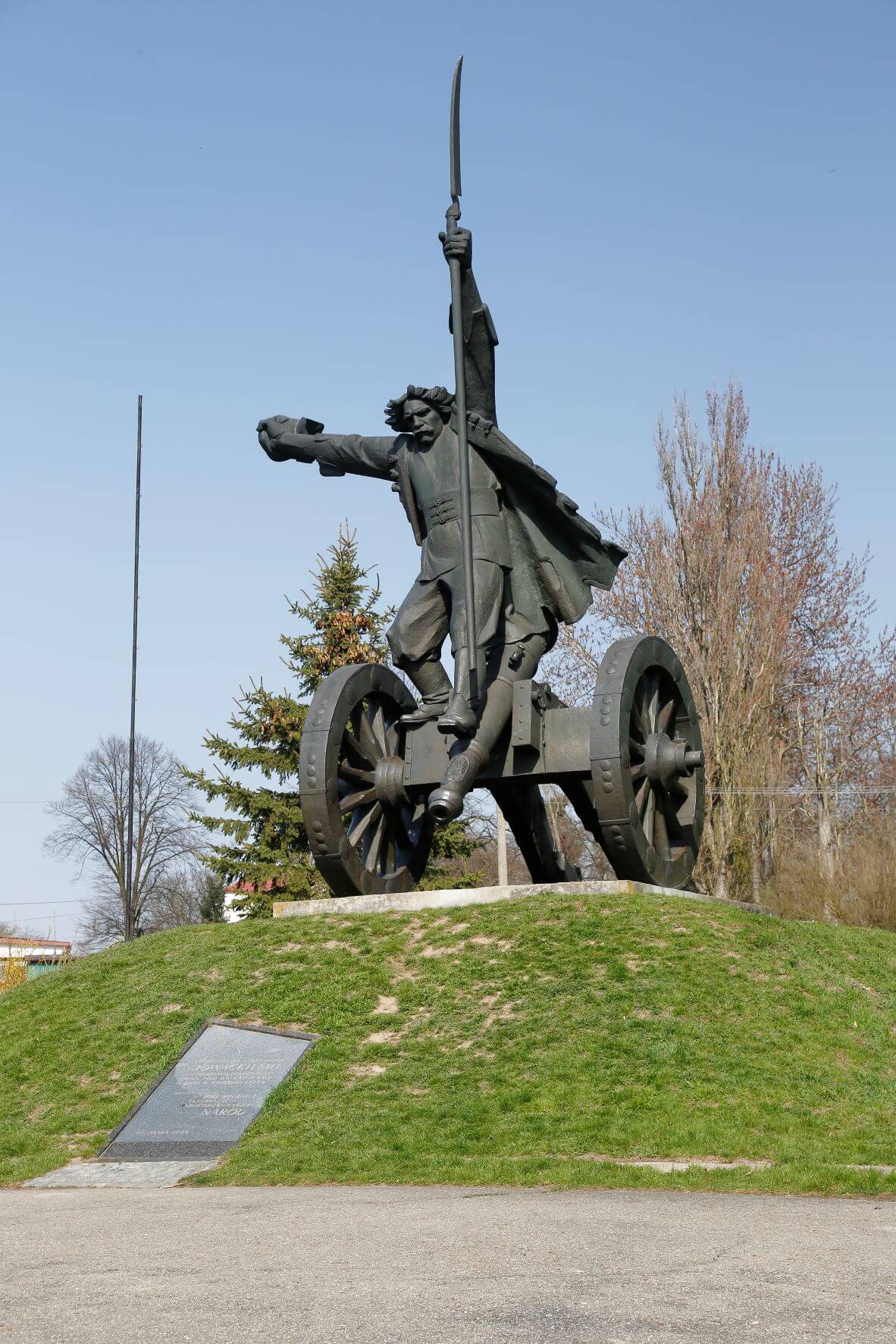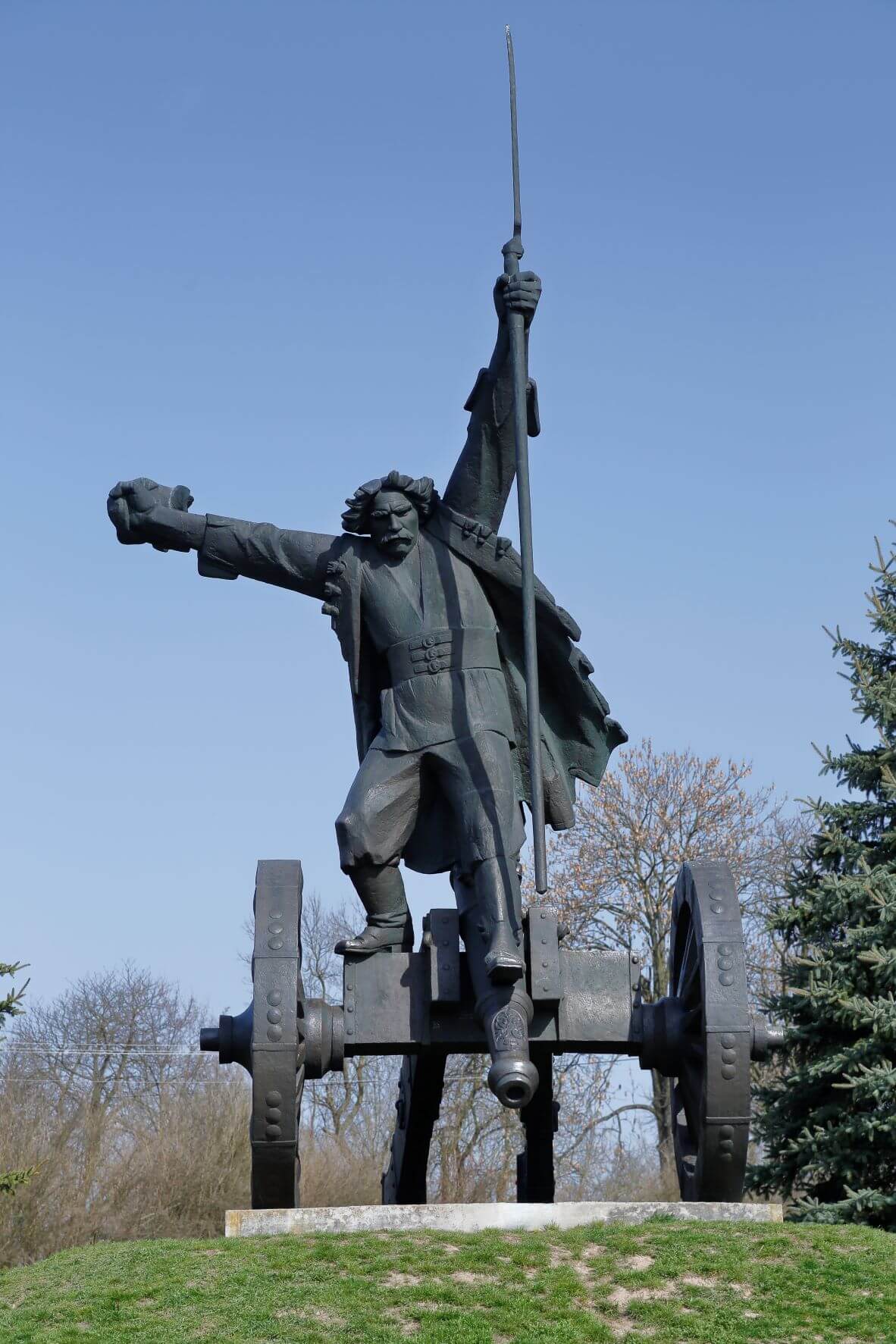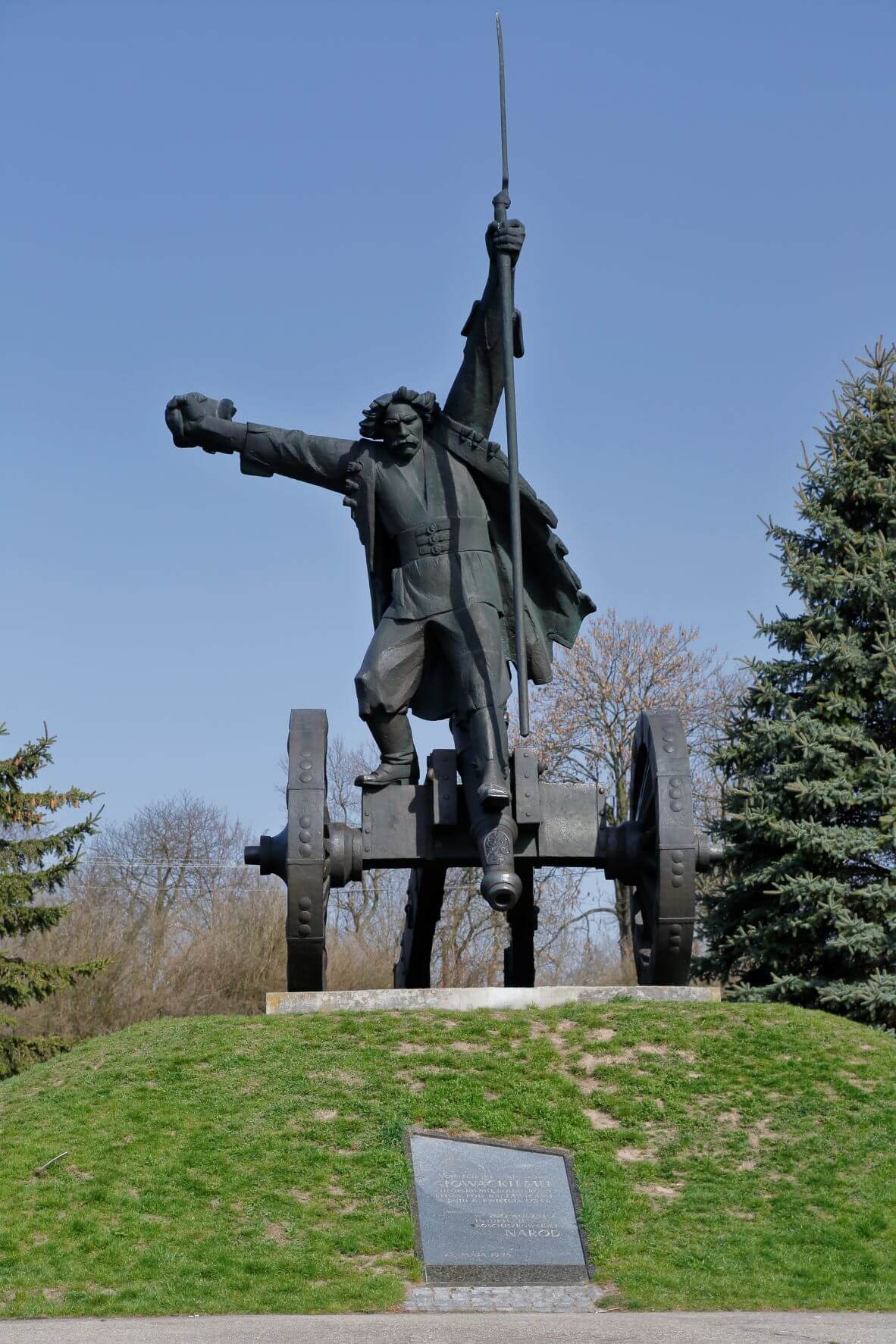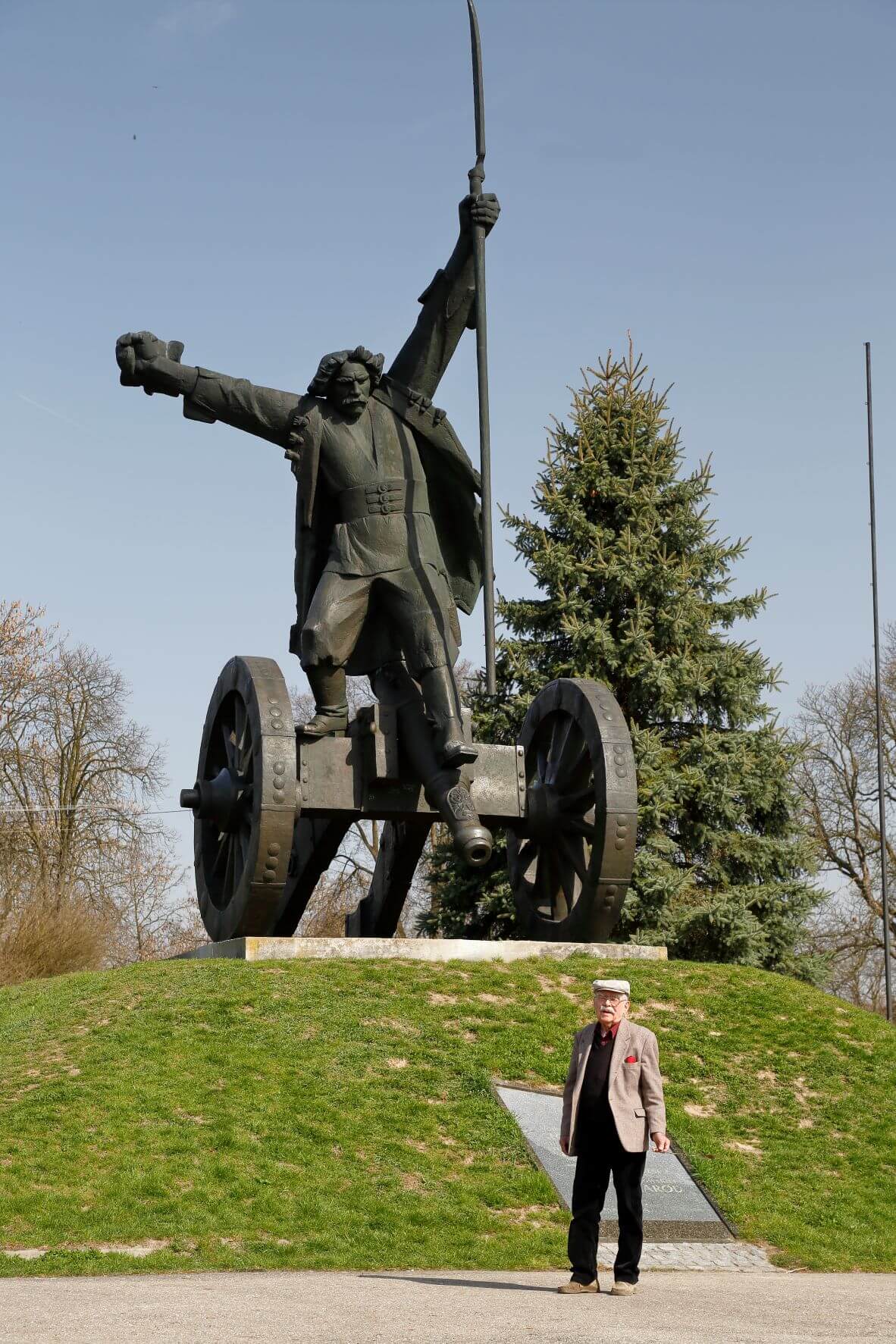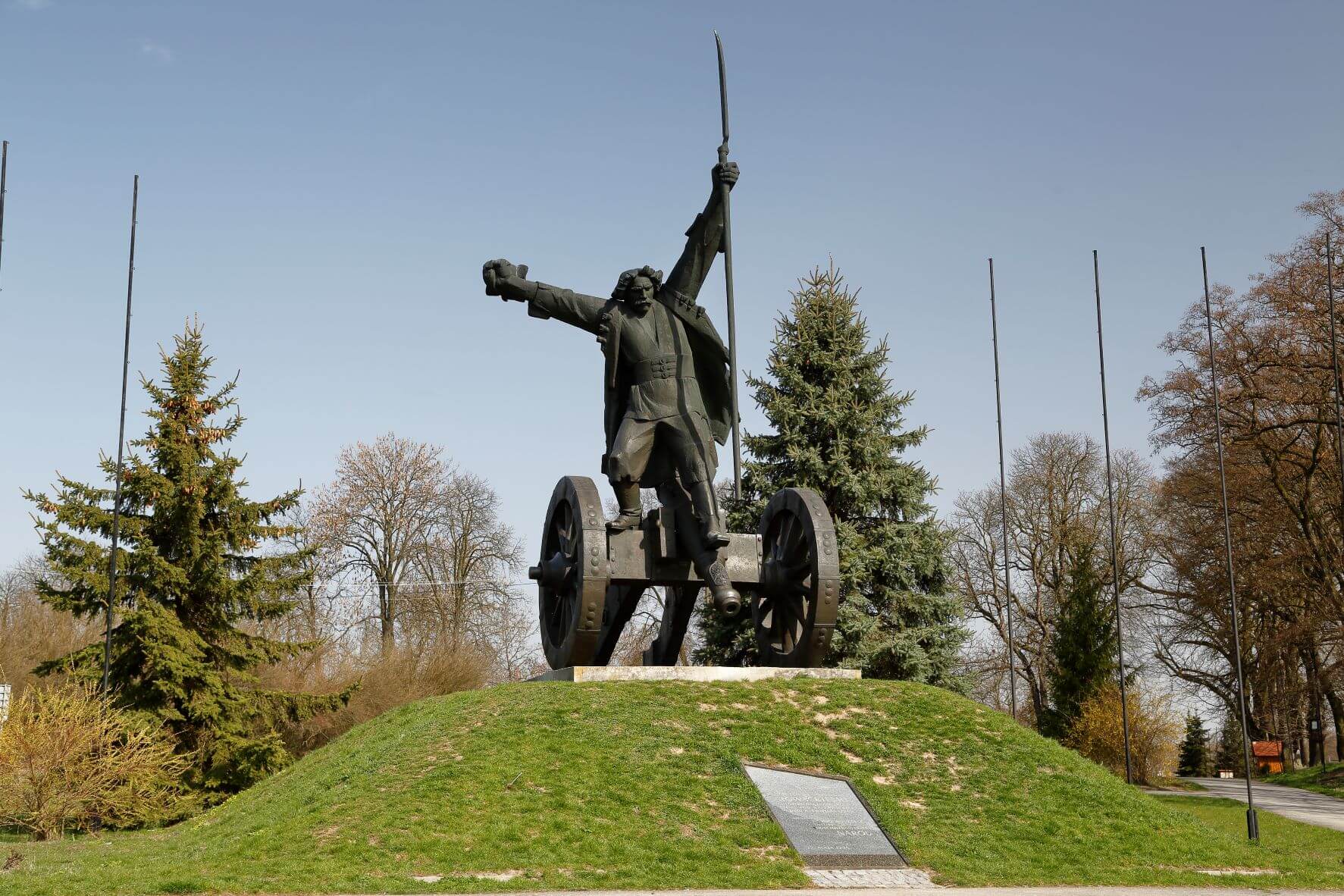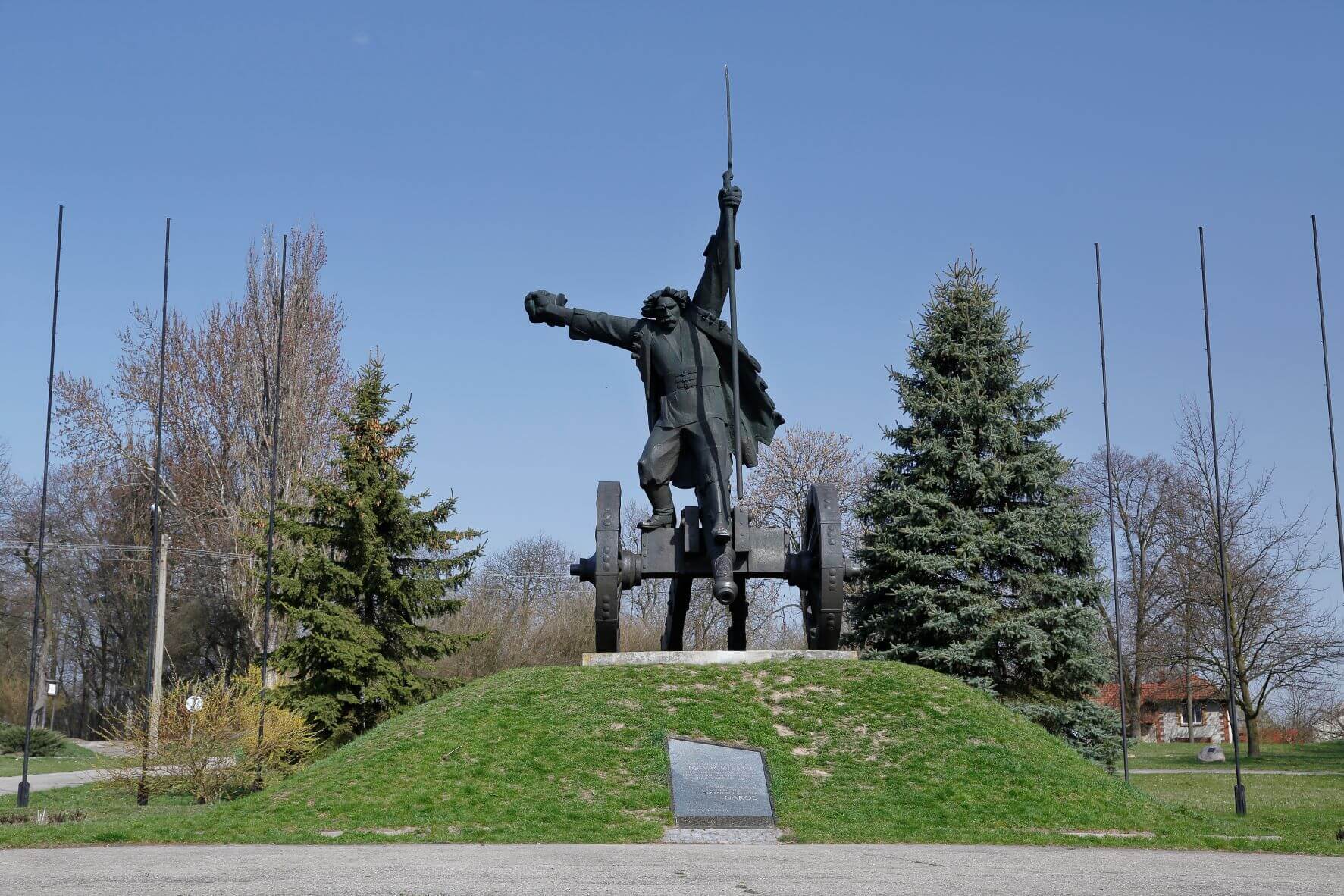The Bartosz Głowacki monument in Racławice commemorating the battle of the Kościuszko Uprising and its hero, unveiled on the 200th anniversary of this battle, is best described by author Marian Konieczny:
- The "liberty" monument I made, which I personally like almost as much as the Nike in Warsaw, was erected in 1994 near Krakow in the small village of Racławice in the Miechowska Upland, with a population of less than six hundred people. It is easy to guess that it depicts Wojciech Bartosz Głowacki. Wojciech Bartosz Głowacki had already had a monument in Tarnobrzeg, reproduced many times in photographs in various publications and quite impressive. Having a predecessor is a challenge for a man: he will always want to be better than him, or at least completely different. Nemo iudex idoneus in propria causa, no one is I am not the right judge in my own case, so I won't censure you here either. However, my approach to the topic is certainly different from that one, although it was composed of three identical elements: a peasant in a coat, a cannon and a scythe. Głowacki from Tarnobrzeg froze in a victory pose; he raises his scythe high above his head, not to strike, but in a gesture of triumph, and he hugs the cannon as if he were a newlywed wife, whom it was not easy to get, but now she belongs to him forever. My Głowacki has a stocky figure, a mustached and fierce face. He jumped onto the cannon, presses its barrel to the ground with his heavy boot, ready to rush further and mercilessly kill anyone who gets in his way. In addition, a few years after being cast in bronze, he became politically incorrect because he trampled on the tsar's two-headed eagle. When I was sculpting it, the Soviet Union still existed with its hammer and sickle in its national emblem. The Russian Federation returned to its former emblem. A predatory, stubborn, strong man... As Stanisław Wyspiański wrote: "a peasant is a power and that's enough!"
Nowadays, we can say - in the light of the events in Ukraine - he is no longer politically incorrect, on the contrary. This is often the fate of monuments.


